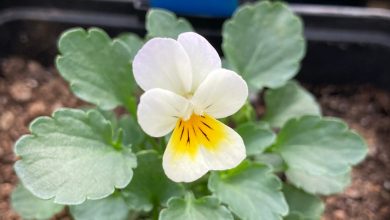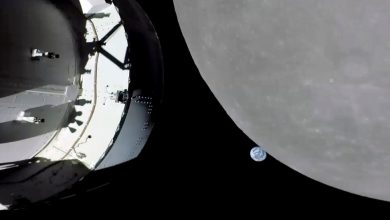SpaceX Delivers NASA’s Crew-3 Astronauts to Space Station

Four astronauts boarded the International Space Station on Thursday after a daylong trip inside a spacecraft built by Elon Musk’s space company, SpaceX. The quartet pushed to more than 600 the number of people to have flown to space, a further milestone in 2021, the busiest year for human spaceflight in over a decade.
SpaceX’s Crew Dragon capsule, nicknamed Endurance, docked with the orbital lab at 6:32 p.m. Eastern time Thursday, about 40 minutes ahead of a schedule announced earlier. When the capsule opens its hatch later in the evening, three Americans and one German will exit. They are to remain in orbit until April 2022.
The crew includes three NASA astronauts, Raja Chari, Kayla Barron and Tom Marshburn, as well as Matthias Maurer, the German astronaut representing the European Space Agency. They joined three inhabitants already on the space station, two Russians and a NASA astronaut who is in the middle of a nearly yearlong mission.
The docking of Crew-3, the name of the mission, capped a flurry of spaceflight activity this week for SpaceX and NASA, which coordinated the Monday night return of Crew-2, four other astronauts who had spent more than six months on the space station. The company is scheduled to launch another rocket on Friday, carrying satellites for its high-speed internet constellation, Starlink, to orbit.
In 2021, more people have traveled to space than in any year since 2009. The trend is part of a surge led by a space tourism industry backed by billionaires and a mounting space race among the United States, China and Russia.
During Crew-3’s six months on the space station, the astronauts will work on over 200 science experiments, from printing fiber optics to studying how concrete hardens in microgravity. Some of the astronauts will stick to an “enhanced spaceflight diet” as part of an investigation that aims to determine the healthiest meal plan for astronauts living in space for extended periods of time. It’s one of a handful of scientific investigations that could help NASA researchers understand how astronauts will eat on longer trips to the moon and eventually Mars.
Some of the astronauts will participate in a series of spacewalks to prepare the station’s power system for new solar arrays. Those arrays will replace a set of aging solar panels that have powered the station since 2000 despite a planned 15-year life span.
The Crew-3 launch had been delayed several times from its initial launch date on Halloween, but bad weather and a “minor medical issue” related to one of the astronauts prompted more delays.
“The Dragon spacecraft was a wonderful ride,” Mr. Marshburn, the only member of Crew-3 who had previously traveled to space, said during a live video tour of the capsule. After launching on Wednesday night from Kennedy Space Center in Florida, the Crew-3 astronauts took pictures from inside the capsule, ate snacks and played games to pass time, like seeing who can do the highest “number of spins without touching anything,” Mr. Marshburn said.
NASA’s next astronaut launch on a SpaceX Crew Dragon capsule will also send four astronauts, though only three have been named so far: Kjell Lindgren and Bob Hines of NASA, and Samantha Cristoforetti, an Italian astronaut. They are scheduled to head to the space station around the time Crew-3 returns in April 2022.
One possibility had been that the fourth astronaut could be SpaceX’s first Russian astronaut passenger. But stalled talks between NASA and Russia, the U.S. agency’s main partner on the space station, to arrange such a flight mean that the seat will most likely be filled by an astronaut from a different country.
“We’ve been working on that agreement for a while, and as I always say, any kind of partnership or agreement has to work on both sides,” Pam Melroy, NASA’s deputy administrator, said in a recent interview. She and Russia’s space chief, Dmitry Rogozin, took a “very positive step,” she said during a meeting last month, toward securing a potential agreement to fly a Russian on a SpaceX’s mission in September 2022 in exchange for a future flight for a NASA astronaut on Russia’s Soyuz spacecraft.
“We just have some things that we have to work through,” she said.





